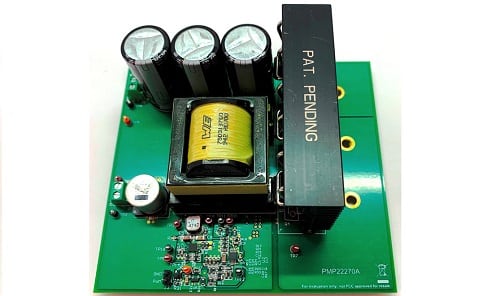Reference design for a non-isolated adjustable 5V to 200V power supply with a maximum output current of 4A.

In some applications, such as medical appliances, audio amplifiers or precision measurement instruments, even a small amount of ripple can cause significant distortion or errors. Therefore, it is important to design power supplies with low ripple to ensure proper performance of the system. To simplify the job of power electronics engineer, Texas Instruments (TI) has released a reference design of a power supply based on SEPIC topology for sensitive applications.
PMP22270 from TI is a 5V to 200V power supply which can provide an output of up to 4A. The output voltage is set using a 0% to 100% duty-cycle, pulse-width-modulation (PWM) input. The reference design work with a 40V input and offers an efficiency of up to 93.7%. The design Enables low-input-ripple voltage and low EMI compared to flyback converters.
The reference design is based on LM5022-Q1 which is a high voltage low-side N-channel MOSFET controller ideal for use in boost and SEPIC regulators. It contains all of the features needed to implement single-ended primary topologies. Output voltage regulation is based on current-mode control, which eases the design of loop compensation while providing inherent input voltage feed-forward.
A SEPIC converter (Single Ended Primary Inductance Converter) is a type of DC-DC converter that can step up or step down an input voltage to produce a regulated output voltage. It is similar to a buck-boost converter but uses a unique topology that allows for a non-inverted output voltage with respect to the input voltage. The main advantage of a SEPIC converter is that it can maintain a constant output voltage over a wide range of input voltages, including those that are higher or lower than the output voltage. This makes it useful in applications where the input voltage may vary, such as in battery-powered systems or automotive electronics. Additionally, a SEPIC converter can provide a low ripple output voltage, which is important for sensitive electronic devices. However, the complexity of the SEPIC converter topology means that it can be more difficult to design and control than other types of DC-DC converters.
The PMP22270 reference design offers high efficiency, the graph below shows the efficiency of the reference design with different input and output load.

This reference design has been tested by TI. It comes with BoM, schematics, calculations for components, etc. You can find additional data about the reference design on the company’s website. To read more about this reference design click here.








